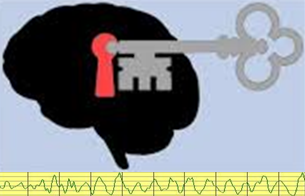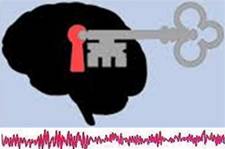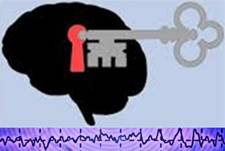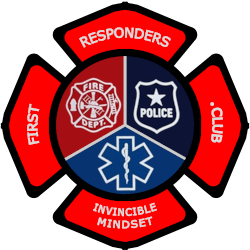By Robert Rudelic BS, NMT, MES

When life gets going too fast, many of us like to put it on pause hoping it will miraculously get better on its own.
I’m a class 5 white water boater and on the river, as in life the river never stops. When you pull into an eddy to get a breather, you still have to work to stay there. In life, when we hit pause, life does not stop moving — it keeps going, and when you’re working hard to keep it on pause, something unexpected happens and you find yourself out of control anyway.
Hitting pause in life is a placebo; a way to put off making a choice, a decision, and then taking action. No matter what you do or how long you tread water, in the end you must move or be moved. On the river I’ve learned an eddy is a god send when you’re running a long stretch of class 5 rapids. I can slow everything down long enough to survey what my options are, make a decision and go!!! I’ve also learned, waiting too long results in poor decisions that result in meager execution and poor results. Just like in life — and here’s why:
When I’m looking over a series of class 5 rapids and evaluating which route is most feasible and has the least risk, the longer I look at the rapids the more indecisive I get. I also get more concerned about each detail even while knowing it never goes as planned, and running a class 5 rapid is all about how you react and execute plan B and C. The faster you make a decision and put your plan into motion, the stronger you are, and faster your reflexes are, because you’re not stuck in the grips of fear. Once fear gets ahold of you, your strength, focus and reflexes are diminished — along with the mental grit needed to succeed.
This goes for life. The longer you stay in a bad situation the worse off it seems to you. You wait too long and you get mentally constipated — that’s an emotional loop filled with gloom and doom where all you see is what you can’t have. Imagination, enthusiasm, creativity, problem solving and strategizing are shut out, Your brain shuts down and can’t process information from right hemisphere to the left; otherwise known as homolateral thinking.
Your brain and your emotions are on a counterbalance scale. When your emotions are too high, your brain shuts down. One of the best responses to this is saying to yourself “oh screw it” and Go For It. Without action, opportunities will never appear to you. It’s only when you’re in action that your landscape changes and you can do something to change your direction in life. Just like the river; once you leave the eddy all hell breaks loose, but you are in control of the chaos, because you have a direction and can fight the whims of the waves, self-correct as you go and reach where you want to go in the end.
So, no matter what — don’t stay too long in your eddy, it’s a false place of safety and will eventually push you into action. It’s your choice, whether you’re in control of which direction you’re going in or the river’s choice. I’ll always take my chances on my own decision making process, that way I’m taking the fight to the river and not a victim of its whims.
I’ve been boating for almost 30 years and I’m still here — and still loving it. That’s the same for my life as well. As long as I can pick my route and take action, I’ll never give up until I get to where I want to go.
For more information, visit our PowerTapping page.
San Francisco, CA 94107
Contact Us: www.RobertRudelic.com/contact
E-Mail: support@RobertRudelic.com
By Robert Rudelic BS, NMT, MES

We have all heard from someone — mother, father, pastor, coach, etc. — that we should be grateful for what we have and that gratitude is a powerful tool in life but ….what does gratitude really mean?
Gratitude is a positive emotion that involves being thankful and appreciative and is associated with many mental and physical health benefits.
When you experience gratitude, you feel grateful for something or someone in your life and respond with feelings and actions of kindness, warmth, and other forms of generosity.
Most people want to feel good about how their life is going and behave in such a way that they continue to feel that way. So why don’t they, what is the biggest obstacle for a person to utilize gratitude in their lives?
A sense of entitlement is perhaps the greatest obstacle to gratitude and being grateful for all one has. “Research has shown that people who are ungrateful tend to have a sense of excessive self-importance, arrogance, vanity, and a high need for repeated admiration and approval,” writes Dr. Robert Emmons in his book Gratitude Works! July 1, 2018.
So, if you want more for your life, be happier, have better relationships, be more productive, build resilience and much, much more —
The Secret is > > > An Attitude of Gratitude!
“Acknowledging the good that you already have in your life is the foundation for all abundance.”
- Having Gratitude makes you happier
- Gratitude makes people like you
- Gratitude makes you healthier
- Gratitude boosts your career
- Gratitude strengthens your emotions
- Gratitude develops your personality
- Gratitude makes you less self-centered
- Gratitude can keep you away from the doctor
It’s common advice to create a gratitude journal and spend a few minutes each day reflecting on the things you are grateful for. Spending just a few minutes each day in this mindset will produce an overall happier and more satisfying mood. You’ll feel grateful more often and the intensity will be stronger and last longer. Gratitude is one of the most powerful tools in your emotional tool box. I believe being grateful in short spurts throughout the day is far more powerful and easier to do.
I also believe that being grateful is a mindset and a skill, and the more aware you are of things to be grateful for and express your gratitude in the moment, the faster you’ll become happier and more grateful.
Gratitude generates social capital: (the networks of relationships among people who live and work in a particular society, enabling that society to function effectively). In two recent studies with 243 total participants, those who were 10% more grateful than average had 17.5% more social capital! Research consistently shows important benefits related to social capital, such as individuals with higher levels of social capital being happier and finding better jobs. Research also shows that people report better health and increased levels of trust in a community as a result of their positive relationships. Having gratitude makes you nicer, more trusting, more social, and more appreciative. As a result, it can help you make more friends, deepen your existing relationships, and even improve your marriage.
Gratitude lowers cortisol, a stress hormone, in your body. Lowered cortisol levels help you avoid many physical and mental side effects of stress and improves overall physical health. Gratitude encourages pro-health behavior like exercising and paying attention to health risks. People who are grateful tend to sleep better and have fewer aches and pains. Expressing gratitude is associated with a host of mental and physical benefits. Studies have shown that feeling thankful can improve sleep, mood and immunity. Gratitude can also decrease depression, anxiety, difficulties with chronic pain and risk of disease. There is even reason to believe gratitude can extend your lifespan.
Gratitude makes you a more effective and positive leader or manager, helps you network, improves your decision making capabilities, increases your productivity, gain respect, and helps you attract accomplished mentors. As a result, gratitude helps you achieve your career goals, as well as making your workplace a more friendly and enjoyable place to be. Having a grateful mindset also changes biology. Positive acts benefit you by releasing oxytocin, a hormone that helps connect people. It is sometimes referred to as the love hormone. Those you connect with will also benefit from your kindness and appreciate the recognition of their efforts. Sharing kindness can make you healthier and happier.
Gratitude reduces feelings of envy, makes for happier memories, lets you experience good feelings, and helps you bounce back from stressful events. Gratitude is a way for you to appreciate what you have instead of always reaching for something new in the hopes it will make you happier or thinking you can’t feel satisfied until every physical and material need is met. Gratitude is the antidote for feeling inadequate and comparing your-self to others. Gratitude helps you focus on what you have instead of what you lack.
It really does, and in potentially life-changing ways. You automatically become more optimistic and less attracted to material things. Gratitude builds emotional resilience by helping you to see the positive things in life and replacing pessimistic thoughts with optimistic ones. The act of gratitude is the act of focusing on the good in life. If you perceive your current life to have more good, you will also believe your future life to have more good. Optimism is correlated with gratitude because those with an optimistic personality are biologically more likely to focus on the good than on the bad and rise above personal disappointment, stress and anxiety, etc. Gratitude greatly increases self-esteem. Research shows that people who are more grateful also tend to have higher self-esteem. When you are aware of how others treat you and the good things they do for you, you develop a stronger sense of your own value.
Gratitude is about acknowledging others and their acts of kindness, resulting in reduced self-focus. It’s most likely why grateful people are admired and respected so much—rather than being occupied with themselves all the time; they show care and interest toward others. Gratitude and humility go hand in hand; they are mutually reinforcing. Expressing gratitude induces humility, and humility increases your capacity for experiencing and conveying gratitude. The more grateful you are, the more likely you are to help others. As your cup overflows, you feel a natural urge to help others.
Gratitude can’t cure cancer but it can strengthen your physiological functioning. Positive emotions improve health unlike the known link between a negative mental state and physical suffering. In a doctor-patient relationship the patient’s belief makes a world of difference as to that person’s health. What a doctor says and what the patient believes may be more closely tied to the patient’s outcome than what the doctor does physically.
If a doctor is warning about possible negative side effects increases the likelihood of the patient experiencing pain or suffering, as research consistently suggests will happen, the leading culprit is the patient’s mental state. Fear or a deep pessimism that they won’t get better can be the underlying enemy to health. The flip-side of the belief coin is the health benefit linked to a positive mental state.
According to a landmark review, positive expectations are associated with better health. Science Daily reported that the reviewers of more than 160 studies on the mind-body connection were shocked by the consistency they saw in the data. Over and over the evidence showed that a person’s positive beliefs are a strong influence for good on their health.
If the root driver of the body’s health, good or bad lies in what’s occupying your mind, it’s important to be much more alert to what’s tugging at you for attention. if you want to improve your health, improve your mind.
Gratitude is a positive emotion. It’s no far stretch that some of the benefits like better coping & management of terminal conditions, faster recovery from certain medical procedures, positive changes in immune system functioning, more positive health behavior, apply to gratitude as well.
In fact, some recent science shows just that — those who engage in gratitude practices have been shown to feel less pain, go to the doctor less often, have lower blood pressure, and be less likely to develop a mental disorder.
“Gratitude is the healthiest of all human emotions. The more you express gratitude for what you have, the more likely you will have even more to express gratitude for.”

• Attitude •
There once was a woman who woke up one morning, looked in the mirror
and noticed she had only three hairs on her head.
‘Well,’ she said, ‘I think I’ll braid my hair today.’
So she did and she had a wonderful day.
The next day she woke up, looked in the mirror
and saw that she had only two hairs on her head.
‘Hmm,’ she said, ‘I think I’ll part my hair down the middle today.’
So she did and she had a grand day.
The next day she woke up, looked in the mirror and noticed
that she had only one hair on her head.
‘Well,’ she said, ‘today I’m going to wear my hair in a ponytail.‘
So she did, and she had a fun, fun day.
The next day she woke up, looked in the mirror and
noticed that there wasn’t a single hair on her head.
‘Yay!’ she exclaimed. ‘I don’t have to fix my hair today!’
• Attitude Is Everything•
Be kinder than necessary – everyone you meet is fighting some kind of battle.
• The Gratitude Exercise Simplified •
Each day, when reflecting on the things you are grateful for; sit quietly and start tapping. Tap each point for 7-10 seconds then change to the next point and keep tapping throughout the exercise. While tapping, start with one thing you are grateful for, state it then state why you are so grateful and elaborate. When finished with the first thing you are grateful for, complete it with a fist pump and passionately say thank you! thank you! thank you! Then move to the next thing you are grateful for. Do this gratitude exercise for 10-15 minutes then spend a few minutes reflecting on what you just did.
This exercise can be done anywhere, anytime you are feeling grateful.





For more information, visit our PowerTapping page.
San Francisco, CA 94107
Contact Us: www.RobertRudelic.com/contact
E-Mail: support@RobertRudelic.com
By Robert Rudelic BS, NMT, MES
 Coping With Infertility – the mental toll and the roll of epigenetics and why unexplained infertility is not always just a medical or physical problem!
Coping With Infertility – the mental toll and the roll of epigenetics and why unexplained infertility is not always just a medical or physical problem!
Scientists have made some incredible new discoveries on how our minds can literally affect our biology, especially through the study of epigenetics, the branch of science that looks at how inherited changes of phenotype (appearance) or gene expression are caused by mechanisms other than changes in the underlying DNA sequence. Instead of looking at DNA as the only factor controlling our biology, scientists are also looking at what’s actually controlling the DNA, which includes our thoughts.
How Does This Relate to Fertility?
So what does any of this have to do with fertility? New evidence suggests that stress does affect fertility. Recent studies show that women with high levels of alpha-amylase, an enzyme that correlates with stress, have a harder time getting pregnant.
Infertility is a devastating issue for millions of people. While many women get pregnant easily, some even by accident, couples challenged by infertility seem blocked from achieving their goal of having a family. What started out as a dream being fulfilled quickly becomes an all-encompassing dilemma or obsession as it’s been described to me by many women going through this journey. They feel out of control, questioning themselves and their femininity, the who, what, how and all the why’s….
› Statistics – Source (Centers for Disease Control)
- 28% of infertility problems are unexplained. Many believe is it higher than 28%
- The number of women ages 15-44 with impaired fecundity (impaired ability to get pregnant or carry a baby to term): 7.5 million
- Percent of women ages 15-44 with impaired fecundity: 12.3%
- Number of married women ages 15-44 that are infertile (unable to get pregnant after at least 12 consecutive months of unprotected sex with partner): 1.0 million
- Percent of married women ages 15-44 that are infertile: 6.1%
- Number of women ages 15-44 who have ever used infertility services: 11.3 million
› Facts
- The role stress plays in the lack of successful conceptions is often discounted in the medical community
- Nutrition advise and planning is something the couples must seek help for on their own
- The whole process is very cold and dehumanizing. (What effect does that have on the baby?)
Case Study of Mark and Jenna
Mark and Jenna came to me looking for answers. They had been trying to conceive for two years with no results. In the beginning, they never gave it a thought that there would be a problem getting pregnant. They were having fun painting the baby’s room, planning their future schedules to accommodate their new addition, arranging for daycare, etc. After several months of trying with no success, they began to worry and started noticing ads about infertility and its many causes – and, they asked themselves “could this be us? Could we be one of “them”? Little did they know at the time what that long two year journey would entail for them but in the end they found a bright light on the horizon!
› Study Format – 10 Session Case Study
› Overview of Client(s)
Mark and Jenna, a young couple in love, doing well in their careers with a strong social circle and enjoying the love and support of their families. It seemed like everyone around them was moving forward and getting serious about life, finding mates, getting married and settling in for the next phase of their lives.
Mark and Jenna wanted to have a family like many couples. They dreamed of being parents and having a community of friends centered around their kids. When they found out it was not going to be so easy their lives changed.
After a lot of thought and serious research they decided to enter the medical world of infertility thinking it would be as easy as a few tests, a couple rounds of Clomid (a common infertility drug) and they would be on their way. That’s what their friends told them and the medical community led them to believe – they had all the answers. Not so fast though! Even though Mark and Jenna were blessed with the luxury of having one of the leading infertility clinics in the country nearby, they soon became disillusioned and extremely disappointed.
For Mark and Jenna the incremental angst was growing with every failed attempt. The embarrassment when friends ask how things were going and the advice everyone was giving them was getting to be too much. Jenna was having nightmares now obsessing about having or not having a baby and crying at the mere sight of a young mother with her child. Mark had his own demons, especially helplessness. All he could do was be there for his young wife and hope for the best. Men are not wired for that. Men are problem solvers at heart and to make matters worse the doctors rarely consider the man unless sperm is the problem. Marks many fears were kept in the dark for fear he would upset Jenna in some way and cause even more anxiety in the relationship.
Along with the medical treatments they tried many things including detox programs, nutritional supplements, herbs, different sexual position, prayer, and still no results.
› Medical History
Jenna was diagnosed with endometriosis which is a very painful condition that did require surgery. This added to her anxiety over worrying if she was making the right decisions and if it would hurt her chances of getting pregnant. At times she did not have much confidence in the doctors but eventually relented to their suggestions out of fear – much of which was heightened by the doctors.
› Objective
To overcome the emotional stress they were going through which they believed was contributing to their overall problem, ultimately get pregnant and have a family.
› Session 1
Valentine’s Day was the first session with Jenna. She set herself up on her back patio with her husband next to her and put her phone on speaker. I started by asking her a series of questions to assess her circumstances and get to know her a little. Very early in our conversation I realized that the first issue we needed to address was to get her out of her obsessive pattern of thinking of getting pregnant 24/7. When I asked her to rate the intensity of her obsessive thinking on a scale of 1-10, she said “25!” Along with thinking of getting pregnant 24/7, she was also experiencing feelings of guilt, embarrassment, shame, helplessness, anger, resentment, sadness and much more. Her emotions on so many levels were raw and her feeling of desperation was palpable.
› Results
After one hour of working with me she was amazed how calm she felt. When I had her go back and visualize the issue we worked on and bring to mind various scenarios around the situation, mentally create different circumstances around the situation to see if she could trigger the emotion and there was very little intensity left. She was amazed and so grateful for the experience. She later said that she had the best Valentine’s Day she’d had in years.
› Follow-Up Check-In Call
A few days after our initial session, we did a quick check-in to see how she was doing. She had text me a question about the tool I taught her in our session and needed to know if she was doing it correctly, so we did a brief review.
› Session 2
The focus of this session was to help Jenna regain her sanity and sense of self while going through this process and feel hopeful again. While day to day life was consumed by doctors’ appointments and thinking about getting pregnant, managing emotions is essential. Jenna had become overwhelmed and stressed by this all-consuming process. Managing stress is a key to not only getting pregnant but also having a healthy, happy baby. I introduced her to the work of Dr. Bruce Lipton – Internationally Acclaimed Epigenetics Pioneer and author of the book …“The Biology of Belief.” In this groundbreaking book he addresses the connection between the environment a baby is conceived in and the baby’s overall health in the womb and in the future. The environment is the key to conception and unfortunately this is mostly overlooked in the doctor’s office.
› Results
She started sleeping better and was feeling more hopeful and energized. Just the day before she had seen a friend with her new baby and because of applying what I taught her, she did not breakdown and cry afterwards. This was huge for her. She was feeling hopeful again and not so overwhelmed with emotions that she even accepted an invitation to a baby shower for a friend and was able to have a good time and handle questions about how she was doing with poise and composure with the feeling that everything was ok.
› Follow-Up Check-In Call
We talked about how she had handled herself in the presents of her friends and she expressed how she felt almost comfortable in answering their questions. Jenna was beginning to learn how to quickly address the negative emotions that show up sometimes in an instant.
› Session 3
Jenna shared how she was struggling as she took a look back on her present life and noticed that in so many ways all the days over the past two years were just the same old monotonous routine and – it was taking its toll. Just that morning, she woke up after having another nightmare and couldn’t shake the nagging desire to have a baby. Her thoughts while driving to work were on how many more people she’d have to hear about who are pregnant. At lunch a friend asked her how things were going. Driving home from work her thoughts were consumed with wondering if she’ll ever get pregnant. Upon arriving home she sees her husband and just wants his support but instead feels resentful.
› Results
Jenna is learning to embrace PowerTapping, (the tool I taught her) as a day to day practice and experiencing change in the way she perceives her world and is slowly becoming stronger and more confident. PowerTapping is a highly effective tool and can be done in the moment of upset or worry and takes as little as 30 seconds to calm down. Yoga or deep breathing or self-hypnosis or other methods don’t work so quickly. After spending a few minutes tapping she was surprised at her overall feeling of relief both physically and mentally.
› Follow-Up Check-In Call
She had a question about the PowerTapping technique which was “by doing it more often and for more time would I feel even better?” I said “Yes” and “Yes!” – and I also explained the added benefit would be that in a shorter amount of time she wouldn’t be tapping about these issues period – they’ll be gone.
› Session 4
Six days had passed since learning that the most recent attempt to get pregnant had failed. Jenna was taking estrogen to get her extremely low levels up so the embryo could take. It did not work. She “lost it” in the doctors’ office – kicking a trash can and ripping the paper cloth off the exam table. In our session she explained what happened and how she reacted. She was very down on herself as she usually is. Self-love will be an ongoing effort and process. I pointed out how well she did and the profound change she has made from where she was and how she would have reacted before we started our work and how she handled it this time. When she realized it she immediately recognized her old habit pattern and how well she felt responding in her new chosen response behavior.
› Results
This very disappointing incident would have set her off for weeks or even months plus added to her overall negative self talk that she’s damaged and will never have a baby. Instead she had a normal, healthy release of pain and disappointment then released the emotions with tapping and moved on.
› Follow-Up Check-In Call
We spoke briefly how she was so programed to react in certain ways and then we reinforced her new way of handling her emotions.
› Session 5
Jenna was very stressed because in just a few days she would be hosting her in-laws and would be breaking the news to them about the latest failure. I learned her mother in-law was not very nice to her and had treated her horribly since day one. She was not “good enough” for her son. Jenna had been previously married and because of that – she was flawed in her eyes. Jenna opened up about the history between them, and the roll Mark played in it. We worked on many of the aspects she presented and after we cleared the old hurts and resentments we shifted to how she (Jenna) wishes to be in the presences of her mother-in-law from now on. The visit was coming up so we rehearsed using P.I.V.M. – my advanced visualization method, and got her demeanor and wording down and she felt really good about how she wanted to handle the issue. I spoke to her about the need for her to “train” her mother-in-law how to treat her, and them as a couple. She decided on several things that will be needed for them to move forward and we rehearsed them as well. She felt confident and we finished with a few good fist pumps.
› Results
She now feels far less guilty about not living up to her own expectation and she’s not beating herself up as much either. All of this needs to be seen in context, she was “obsessed” with getting pregnant and it affected everything in her life in a negative way. She lived in a constant state of anxiety, self-doubt, anger, disappointment, helplessness and despair. Now she’s upbeat and more balanced than ever. She told me over and over again how grateful she is for having found me and the work I do is so powerful and how it could help so many people get through this journey better. She really has embraced the epigenetic model I presented to her. First create a host (womb on the physical level) that the baby would want to live in for 9 months then create a family environment the baby would want to grow up in.
› Follow-Up Check-In Call
Jenna was so excited to tell me how she had put into action everything we had worked on and how lovely her mother-in-law had been towards her during their visit.
› Session 6
Mark and Jenna were doing fine as a couple but as with all couples there were unspoken issues lurking. By looking forward and clearing up issues – it sets the table for a better relationship in the immediate and in the future. This involved working with Mark to clear some of his issues which stemmed directly from his family environment growing up. He desperately wanted to be able to stand up to his mother when she expresses disapproval of Jenna – the women he loves and chose to marry and point out and stop how she speaks to her disrespectfully even when others are present. We worked on how he can handle this in a straightforward way with strength and confidence and be vulnerable and empathetic and at the same time.
› Results
Mark had a major Ah Ha moment! It was a major breakthrough for him and it brought up some things to follow up on. Mark can be a bit passive so getting out of his comfort zone to take action is a big step. He now has a better understanding of how Jenna feels when his mother does and says hurtful things and his way of dealing with it is to just ignore it. This make Jenna feel unsupported and says to his mother that her actions are acceptable.
› Follow-Up Check-In Call
Wow – what an awesome call! Mark shared the conversation he had with his mother and felt almost ecstatic. Never before in his life had he been able to express his feelings to his mother and set boundaries. He brought up her prejudice against Jenna over her previous marriage and reminded her of his past relationship with his live-in girlfriend that lasted longer than Jenna’s marriage! How did a piece of paper make it so different? Before the conversation was over, they had come to an agreement on how things were going to be moving forward.
› Session 7
The focus in this session was on being completely open and honest about the ways in which they each handle stress. Jenna admitted that she had terrible eating habits and frequently visited McDonalds. Because both enjoy being outdoors and getting exercise, neither of them are particularly over weight – but whenever she felt stressed she would head for McDonalds. She didn’t need to be reminded that this was unhealthy and she knew she needed a better way to handle stress. She was unaware though of the hormonal damage she was inflicting on her body by eating this way so I went in depth on this issue and explained how this was a big problem and the hormonal disruption could have a profound effect on infertility. For Mark, he was not interested in going to McDonalds but his way of handling stress was to bury himself in his work and hide out behind his business and not be present for her.
› Results
They were both able to open up and the honesty between them was great. There was no blaming or judgment. We worked on Jenna creating a food journal and keeping a close eye on the stress eating. She was excited to make the change and more than willing to do the work. Mark made the commitment to take things head on and stop hiding behind his work. He agreed to be more open about how he was feeling and not look down on himself when he was feeling vulnerable.
› Follow-Up Check-In Call
Jenna was happy to report she had not been to McDonalds once since our last session and because of doing PowerTapping whenever she thought about it her desire to go there was greatly reduced. Mark was sticking to his work schedule and not staying in his office to avoid going home – no matter what was going on.
› Session 8
We focused more on Mark in this session. He, like many men have a difficult time with all of this because he alone can’t solve the problem. I addressed how men in our society are not necessary trained to be loving, supportive or vulnerable and how conventional man-wisdom says that real men don’t do that kind of stuff. If there’s a problem – head for the man-cave! Often men misinterpret being empathetic and vulnerable as weak, wimpy and emotionally unstable. We worked on getting in touch with and working through his feelings of being helpless, frustrated, guilty, angry, sad, and worried for his wife – many of the things men experience but don’t openly talk about. I taught him my P.I.V.M. technique that I had taught Jenna and we worked on him coming to terms and being ok with his feelings and how best to handle things when certain situations came up.
› Results
I believe men are the real untold story as well as the unaddressed party in all of this. So much focus is on the women – that’s appropriate, but men can play such an important roll if trained to do so. So much is not understood about that roll men have in the fertility process and what men need to do to really be an integral part of it. Mark was beginning to understand the importance of his roll and the need for him to really be there for Jenna and how vulnerability leads to empathy, inner peace and strength. Practicing and using the PowerTapping tool he now owns, is a fast and painless process that pays dividends immediately and also sets the stage for a stronger relationship in the future.
› Follow-Up Check-In Call
Quick call and we talked about how Mark was doing. Positive overall and went through a round of P.I.V.M.
› Session 9
An epigenetic perspective is how I approached this session. We worked on the importance of a strong healthy host, Jenna, the mother – the micro climate. Then, the need for Mark and Jenna to be a loving, committed couple for the baby to grow up in that macro climate. The need for Jenna, the host, to take care of herself is taking care of the host for the baby, this is the first step. Mental and emotional health, nutrition, exercise, work load all need to be addressed and adjusted so the baby has the best environment to grow in. Having a loving support structure is important but the host must love herself because that is translated to the baby from the moment of conception.
› Results
Mark and Jenna are now fully committed to getting every aspect of their life on track and create the best environment and be ready for the blessing they believe is coming.
› Session 10
We did a complete review of the 10 weeks we had spent working together and how far both Mark and Jenna had come from that first session. We had a few good laughs about some of the things that had once been such a huge problem that now seemed a bit silly. We reinforced all of the steps to take when any negative emotion showed up and how to kick it to the curb.
› Results
Mark and Jenna came to me through the recommendation of a friend of theirs who had a devastating crisis that I coached him through and he was able to successfully move through it. Jenna said “when I first spoke to Robert, he seemed to know exactly what I was going through -it was like he was in my head”. What a joy to see the difference 10 weeks make!
Outcome/Conclusion
When you have the proper tools for the job the job gets done faster and with better results. Time is of the essence especially after having been in the infertility maze for a while. Most of all – you’re not alone in the battle. My effective, completely non-invasive approach gets results!

Oh – and by the way – Jenna is expecting her second child….naturally!
For more information, visit our PowerTapping page.
San Francisco, CA 94107
Contact Us: www.RobertRudelic.com/contact
E-Mail: support@RobertRudelic.com
By Robert Rudelic BS, NMT, MES

Used by professional athletes to overcome concussion injury and can be used by anyone – there is a way to reset and reverse the traumatic experience! Discover the truth…
Concussion and Post-Concussion Solutions
Parents are more concerned than ever about their children getting injured playing sports. The fastest growing area of concern is concussions and girls are now in the mix with so many playing soccer (one of the of highest risk sports for concussions).
In fact, concussions are more worrisome than most injuries whether from sports or other activities because of the long lasting effects. Take a look at some surprising data;
Statistics: The centers for disease control and prevention (CDC) reports that three traumatic brain injuries (TBIs) occur every minute, 5.3 million persons live with disabilities related to brain injury, and that TBIs cost Americans $76.5 billion in medical care, rehabilitation, and loss of work every year. Multiple reports note that sports participants, including pediatric, college, and professional, sustain a large number of TBIs annually. The majority (75–85%) of TBIs are mild, also known as concussion. Current epidemiological reports find that girls’ soccer, American football, and ice hockey have the highest incidence of concussion. A history of one or more concussions is a risk factor for a subsequent concussion. Sex as a risk factor for concussion is controversial, but for sports in which the playing rules are similar, such as soccer or basketball, females appear to have as much as a two-fold higher risk for concussion.
* The information in this document has been compiled from multiple sources.

 What is a concussion?
What is a concussion?
 A concussion is a type of traumatic brain injury—(aka TBI), caused by a bump, blow, or jolt to the head or by a hit to the body that causes the head and brain to move rapidly back and forth (like a whiplash injury). This sudden movement can cause the brain to bounce around or twist in the skull, creating chemical changes in the brain and sometimes stretching and damaging brain cells.
A concussion is a type of traumatic brain injury—(aka TBI), caused by a bump, blow, or jolt to the head or by a hit to the body that causes the head and brain to move rapidly back and forth (like a whiplash injury). This sudden movement can cause the brain to bounce around or twist in the skull, creating chemical changes in the brain and sometimes stretching and damaging brain cells.
- Headache
- Disorientation
- Nausea
- Vomiting
- Dizziness
- Memory Loss
- Fatigue
- Ringing Ears
- Slurred Speech
- Loss of Concentration
 What is the difference between children’s and adults concussions?
What is the difference between children’s and adults concussions?
 There are major differences between adults and children when it comes to TBI. TBI is the leading cause of disability and death for children in the US, and the two age groups at greatest risk are 0-4 and 15-19. Young people are at greater risk of severe brain injuries because their developing brains are undergoing a complex and sensitive process of growth. A National Institutes of Health Project studied over a hundred young people as they grew by scanning the developing brain. This study revealed that even though the brain reaches approximately 90 percent of its full size by the time a person is six years old, there is a massive reorganization that occurs within the brain between ages 12 and 25.
There are major differences between adults and children when it comes to TBI. TBI is the leading cause of disability and death for children in the US, and the two age groups at greatest risk are 0-4 and 15-19. Young people are at greater risk of severe brain injuries because their developing brains are undergoing a complex and sensitive process of growth. A National Institutes of Health Project studied over a hundred young people as they grew by scanning the developing brain. This study revealed that even though the brain reaches approximately 90 percent of its full size by the time a person is six years old, there is a massive reorganization that occurs within the brain between ages 12 and 25.
During the brain’s development, the axons (neurons that send signals to other neurons) need time to develop myelin, which eventually boosts the transmission speed between neurons. At the same time, dendrites (branchlike extensions that neurons use to receive the signals from axons) grow and develop. This causes the brain’s cortex, where we do our complex and high-level thinking, to become more efficient.
Through imaging work and similar studies of young minds, it has become clear that the brain grows and matures throughout adolescence and beyond. Because of the long time it takes for the brain to fully grow and mature, suffering from any kind of brain injury during its development can have severe and lasting consequences for an individual’s health and wellbeing.
For example, studies done by the University of Virginia Medical School have determined that the development of a brain has a significant effect on the time period of recovery from a TBI – even mild TBI, which we commonly refer to as a concussion. Research suggests that the recovery time of a mature brain is within five to ten days while the vulnerability of a young brain makes recovery time much longer and can result in long-term difficulties for that individual.
Dr. Jeffrey Barth, in his presentation for Brainline.org, states “The brain develops from the bottom up and from the back forward. So the last thing that kicks in is the frontal lobes, and that is the area of judgment.” The results of a TBI on a developing brain can thus be extremely detrimental and can prevent the continued growth that would normally happen during various stages of life.
 Are there different types of concussions?
Are there different types of concussions?
 There are 3 types of concussions –
There are 3 types of concussions –
- Grade 1 – Mild. In the old days this is what was called getting your “bell rung”. You get stunned for a few seconds and then shake it off. This is now known as a Grade 1 Concussion. The symptoms last for less than 15 minutes with no loss of consciousness.
- Grade 2 – Moderate. There is no loss of consciousness but symptoms last for longer than 15 minutes.
- Grade 3 – Severe. You’re knocked out! Unconscious for a few seconds or more. This is the most severe and quite often is accompanied by other injuries including whiplash and cervical injuries.
 What are the initial symptoms of concussion?
What are the initial symptoms of concussion?
 Hyper arousal, anger, a short temper, dazed, confused or disoriented, difficulty sleeping or sleeping more than usual, dizziness or loss of balance.
Hyper arousal, anger, a short temper, dazed, confused or disoriented, difficulty sleeping or sleeping more than usual, dizziness or loss of balance.
 Why do brain injuries look like ADHD?
Why do brain injuries look like ADHD?
 Often ADD and/or ADHD are misdiagnosis and could be the result of post-concussion syndrome. A traumatic brain injury (TBI) results in damage to the brain that leads to problems like forgetfulness, poor focus, impulsivity, and mood shifts. It can happen from sports injuries, car accidents, falls, falling off a bike or other similar events that damage the brain. Concussion is a mild form of TBI. More severe TBI’s usually lead to longer lasting problems and in the most severe cases, they can cause long-term comas or even death.
Often ADD and/or ADHD are misdiagnosis and could be the result of post-concussion syndrome. A traumatic brain injury (TBI) results in damage to the brain that leads to problems like forgetfulness, poor focus, impulsivity, and mood shifts. It can happen from sports injuries, car accidents, falls, falling off a bike or other similar events that damage the brain. Concussion is a mild form of TBI. More severe TBI’s usually lead to longer lasting problems and in the most severe cases, they can cause long-term comas or even death.
The lasting effects of TBI can look amazingly similar to ADHD. The problems related to ADHD and TBI look so similar that they are hard to tell apart. Recent research suggests a link between the two disorders and the possible relationship between ADHD and TBI.
 What is “chronic neurobehavioral dysfunction” and what are the risk factors linked to?
What is “chronic neurobehavioral dysfunction” and what are the risk factors linked to?
 The term neurobehavioral refers to the type of behavioral problems that are associated with brain disorders. It is a term frequently used to describe the serious behavioral problems often seen after traumatic brain injury. The term “neuropsychiatric” is also used to refer to the same behaviors. Risk factors for neurobehavioral disorders in professional athletes include prior concussion, longer exposure to the sport, having the ApoE4 gene, (the riskiest known Alzheimer’s gene), age, gender and previous concussions.
The term neurobehavioral refers to the type of behavioral problems that are associated with brain disorders. It is a term frequently used to describe the serious behavioral problems often seen after traumatic brain injury. The term “neuropsychiatric” is also used to refer to the same behaviors. Risk factors for neurobehavioral disorders in professional athletes include prior concussion, longer exposure to the sport, having the ApoE4 gene, (the riskiest known Alzheimer’s gene), age, gender and previous concussions.
 What is the current medical recommendations for initial concussion?
What is the current medical recommendations for initial concussion?
 After a visit to the doctor or pediatrician and perhaps a referral to a neurologist…..they generally recommend to just go home, take it easy and you’ll be better in a couple of weeks or months. Your doctor may also recommend over-the-counter pain relievers such as Advil or Tylenol (although there is no evidence they have a positive effect), encourage you to get plenty of rest, avoid sports and other strenuous activities, avoid driving a vehicle or riding a bike for 24 hours or even a few weeks or months – depending on the severity of your injury, and avoid alcohol and stay away from computer and phone screens.
After a visit to the doctor or pediatrician and perhaps a referral to a neurologist…..they generally recommend to just go home, take it easy and you’ll be better in a couple of weeks or months. Your doctor may also recommend over-the-counter pain relievers such as Advil or Tylenol (although there is no evidence they have a positive effect), encourage you to get plenty of rest, avoid sports and other strenuous activities, avoid driving a vehicle or riding a bike for 24 hours or even a few weeks or months – depending on the severity of your injury, and avoid alcohol and stay away from computer and phone screens.
 What else can be done?
What else can be done?
 If someone has suffered a sufficiently bad injury, it is likely that they would have a CT scan or MRI to directly identify an area of bleeding, fractured skull, or other injury but the first 10 days are crucial. Creating the best healing environment is just common sense. I recommend, stay away from sugar. Hydrate all day long for better electrical conductivity. Drink calming tea like chamomile or kava-kava to help keep stress low and manage anxiety. Walk to keep lymphatic flow moving. Use food based supplements like fish oil, nutrient dense greens and fruit powders, nitric oxide drinks like beet juice and the nutritional supplement vinpocetine for cognitive protection and to improve circulation in the brain.
If someone has suffered a sufficiently bad injury, it is likely that they would have a CT scan or MRI to directly identify an area of bleeding, fractured skull, or other injury but the first 10 days are crucial. Creating the best healing environment is just common sense. I recommend, stay away from sugar. Hydrate all day long for better electrical conductivity. Drink calming tea like chamomile or kava-kava to help keep stress low and manage anxiety. Walk to keep lymphatic flow moving. Use food based supplements like fish oil, nutrient dense greens and fruit powders, nitric oxide drinks like beet juice and the nutritional supplement vinpocetine for cognitive protection and to improve circulation in the brain.

 What is post-concussion syndrome?
What is post-concussion syndrome?
 Post-concussion syndrome refers to the lingering symptoms following a concussion or a mild traumatic brain injury (TBI). It’s also known as post-concussive syndrome. This condition is typically diagnosed when a person who has recently suffered a head injury continues to feel certain symptoms following a concussion. These often include dizziness, fatigue, brain-fog, headaches, sleeplessness, etc. Post-concussion syndrome can begin to occur within days of the head injury or in many cases it can sometimes take weeks for the symptoms to appear.
Post-concussion syndrome refers to the lingering symptoms following a concussion or a mild traumatic brain injury (TBI). It’s also known as post-concussive syndrome. This condition is typically diagnosed when a person who has recently suffered a head injury continues to feel certain symptoms following a concussion. These often include dizziness, fatigue, brain-fog, headaches, sleeplessness, etc. Post-concussion syndrome can begin to occur within days of the head injury or in many cases it can sometimes take weeks for the symptoms to appear.
 How does post-concussion syndrome manifests and progress?
How does post-concussion syndrome manifests and progress?
 The pathophysiology of ongoing symptoms from the original concussion injury may reflect multiple causes: anatomic, neuro-metabolic, and physiologic. Long term prognosis if left untreated can result into debilitating physical and mental/emotional disorders. The brain shrinks and becomes deformed over time causing dementia like symptoms. Studies show that people who suffer a concussion may be three times more likely to commit suicide years after their brain injury. Repeated concussions are known to cause lasting injuries to the brain and have an impact on long-term brain health that affect brain chemistry, increasing the risk of mood disorders that can lead to suicide.
The pathophysiology of ongoing symptoms from the original concussion injury may reflect multiple causes: anatomic, neuro-metabolic, and physiologic. Long term prognosis if left untreated can result into debilitating physical and mental/emotional disorders. The brain shrinks and becomes deformed over time causing dementia like symptoms. Studies show that people who suffer a concussion may be three times more likely to commit suicide years after their brain injury. Repeated concussions are known to cause lasting injuries to the brain and have an impact on long-term brain health that affect brain chemistry, increasing the risk of mood disorders that can lead to suicide.
 What are the symptoms?
What are the symptoms?
 Ongoing symptoms reflect either a prolonged version of the concussion or a manifestation of other processes, such as cervical injury, migraine headaches, depression, chronic pain, vestibular dysfunction, visual dysfunction, or a combination of conditions.
Ongoing symptoms reflect either a prolonged version of the concussion or a manifestation of other processes, such as cervical injury, migraine headaches, depression, chronic pain, vestibular dysfunction, visual dysfunction, or a combination of conditions.
The Solution
As an integrative therapist I have many tools in my toolbox. Getting fast and lasting results is the core of my 25 + year practice in San Francisco. My motto has always been “Just getting out of pain is not enough. The reestablishment of strength, flexibility and proper biomechanics is essential for good health.” As it pertains to concussions and my coaching work, I root out and eliminate the core causes and use tools that have a high impact and do it in the shortest amount of time.
My clients include people from all walks of life and athletes on all levels treating physical injuries and equally important treating the mental/emotional injuries that result from the injury itself.
To quote the late great Dr. John E. Sarno; “All physicians should be practitioners of “holistic medicine” in the sense that they recognize the interaction between mind and body. To leave the emotional dimension out of the study of health and illness is poor medicine and poor science.”
My Protocol
The first effective treatment for concussion is Frequency Specific Microcurrent (FSM) as it removes the concussion from the body/mind. Since the memory of the trauma is stored in the body/mind it’s important to remove the effects of concussion from the brain. It’s similar to rebooting your computer when it is not functioning correctly and not processing information effectively. Control alt delete is in fact what the Frequency Specific Microcurrent does for our brain. The science behind Frequency Specific Microcurrent (FSM) is extensive. In a scholarly article published by the Cleveland Clinic, FSM works by potentially increasing the production of the substance ATP in injured tissues. ATP is the major source of energy for all cellular reactions in the body. Because treatment with FSM can increase ATP production by as much as 500% in damaged tissues, this may help with the recovery process.
Facts about FSM:
- Increases ATP (the body’s own chemical energy) production by up to 500%
- Reduces Cox-mediated inflammation by approximately 60%
- Increases protein synthesis by 70%
- Increases amino acid transport by up to 40%
- Remodels and transforms scar tissue
- Increases “feel good” Beta endorphin levels
- Helps restore depleted adrenal function
- Reduces fracture repair time by up to 50%
- Enhances DNA synthesis, insulin binding, oxygenation, cellular repair, intracellular calcium uptake and immune function
- Enhances neuromuscular recovery rate between events
I combine FSM and PowerTapping (the technique from my groundbreaking book) “Anything Is Possible – The Art and Science of Tapping Into Your Power”.
About PowerTapping
PowerTapping (a meridian based technique) has been described by some as one of the most important breakthroughs in the area of psychology in this century and successfully used by thousands of people with a broad range of difficulties and is becoming known to many amazed users as a modern miracle. It can dramatically relieve mental/emotional disturbances along with many physical symptoms. It works in minutes and the results are permanent by putting back in a positive belief once the negative belief is removed. Tapping techniques are versatile and are being used confidently by therapists on clients with successes on even the most difficult problems.
Combination of PowerTapping and Frequency Specific Microcurrent (FSM)
Every cell in our body is made up of molecules, which are made up of atoms, which are made up of energy. Our bodies are made of molecules, which are made up of atoms, which are made up of energy. Everything has a vibrational frequency that is unique to the structure with these atoms vibrating at various rates of frequency and manifesting themselves in our skeletal structure, organs, glands, and fluids. As these energy systems become unbalanced, the body begins to malfunction and we experience fatigue, pain, and disease. PowerTapping is a technique that enables us to access the sub-conscious mind – our body’s bio-computer to determine, locate, and correct energetic imbalances. PowerTapping is simply tapping into the subconscious mind (the storage place of our belief system) and eliminating limiting beliefs and replacing them with beliefs that support an intended result.
Our body is just like a computer. Every molecule in every cell stores memories of trauma, disease and all lifestyle stress. PowerTapping gives us a direct means of accessing that computer so we can identify the underlying cause of the problem and energetically release it. The meridians are portals into the body/mind. Applying a PowerTapping sequence (algorithm) on the meridian points help clear any blocks causing distress in the energetic body.
Energy blockages are released through balancing vibrational energy points associated with the organs, glands and systems of the body. Healing occurs on a cellular level rather than symptomatic relief.
PowerTapping is encompassed under this banner of Energy Medicine/ Energy Psychology. Like all of the forms of Energy Medicine it was adapted from Applied Kinesiology and the principles inherent in Chinese medicine and the Meridian System which have been practiced for thousands of years.
Most forms of energy medicine have only been known since the mid 1980’s, but they are based on firm groundwork of Eastern medicine that stretches back at least 5000 years. Acupuncture, chakras, the subtle energies, yoga, gi gong, and applied kinesiology are the theoretical underpinnings. The newer field of quantum physics and the electrical experiments of Tesla have led to a further understanding of why these techniques work.
All of these systems work by accessing the more primitive parts of the brain and therefore work on the subconscious processes rather than focusing on the cognitive and conscious prefrontal cortex. It also accesses the subtle energies of the acupressure / acupuncture points and the meridian system in Chinese medicine.
Because of this, change is often more rapid, less painful, and more complete than traditional talk therapy.
Some physicians, such as one of the founders of the American Holistic Medical Association, C. Norman Shealy, MD, PhD, are making statements such as “Energy medicine is the future of all medicine.” Mehmet C. Oz, MD, the popular Oprah guest known as “Dr. Oz” has said that “Energy Medicine is the next big thing.” And according to Deepak Chopra, MD, “We are each a localized field of energy and information with cybernetic feedback loops interacting within a non-local field of energy and information.”
Dr. Joseph Mercola, DO (Doctor of Osteopathic Medicine) runs the most popular alternative health web site on the planet, and is an avid proponent of tapping, he has stated on Twitter that “An option for excellent pain relief without any of the health hazards that typical pain relievers carry is Meridian Tapping Technique or MTT.”
There is a better way to fully recover from concussions and it requires no drugs, surgeries or long lasting psychotherapy – it’s FSM and PowerTapping. When PowerTapping and Frequency Specific Microcurrent treatments are combined – the results are rapid and amazing. The microcurrent addresses and cleans up the physical manifestations of the trauma and the PowerTapping addresses and cleans up the mental and emotional manifestations of the trauma. It’s essential to address both for full recovery.
My success working with concussion injuries and post-concussion syndrome is extensive and my client testimonials are many – from auto accidents, falls and athletes of all ages and all sports – from the playground, casual weekend warriors to professional athletes…

“Robert knows and understands an athlete’s mind and body. He helps me recover faster, perform better and stay healthy. I view Robert as one of my secret weapons.”
Bill Romanowski Former NFL Great and Author
For more information, visit our PowerTapping page.
San Francisco, CA 94107
Contact Us: www.RobertRudelic.com/contact
E-Mail: support@RobertRudelic.com
By Sheryl Rudelic

Occasional constipation is common but if you’re experiencing chronic constipation it’s time to do something about it – it’s way more than a nuisance – its effects can be irreversible, profoundly affecting the cardiovascular, endocrine, and immune systems…
Constipation Facts
Some four million Americans experience constipation on a regular basis; more than half that number will visit a doctor each year with constipation as a major complaint. Constipation tends to happen more often in the elderly and in pregnant women, but it can strike people of all ages. At last count, Americans were spending over $700 million dollars a year on laxatives!
The Reasons for Constipation
● TRAINING
The first major reason for so much constipation in the United States is that we are trained not to go to the bathroom when we have the urge. We are often just too busy to take the time, or we could be in a socially inappropriate location so we would feel embarrassment. In school we are taught to hold it until class is over, etc. From an early age we are conditioned to this behavior. The problem with this type of training is that the body eventually gets the message; it will stop telling you that it is time to go to the bathroom. The muscles that hold back stool also become stronger and better at keeping stool from coming out. It becomes a vicious cycle.
● THE STANDARD AMERICAN DIET
Much of the food we eat in the United States is made from ground up seeds such as bread, cereals, cake, and other foods made from flours. Eating grains is fine, but it is much healthier to eat them in whole form – the way most people eat rice. The difference is that eating grains that have been ground makes for stool that is hard and compacted.
● MEDICATIONS
A side effect of many pharmaceutical drugs is constipation. The drugs cause the autonomic processes in the GI tract to delay their normal rhythmic function. This results in the slow and difficult passage of stool. Many pharmaceutical drugs kill healthy bacteria and the healthy bacteria helps to further breakdown waste, helps to generate lubrication, cleanses the colon and helps protect the colon against infection.
● DEHYDRATION
Dehydration can be a huge factor in constipation. When water is in short supply in the body, the colon will act to restrict unnecessary water loss through the stools. Colon muscles will contract to squeeze out and subsequently reabsorb water back into circulation. This can result in harder stools that are not only more difficult to pass, but may also irritate and weaken the walls of the colon, causing severe abdominal pain. Since the water that the colon reabsorbs back into circulation is not filtered water, but wastewater, it must then be filtered by the liver and the kidneys. This may place additional strain on these overworked organs.
● LACK OF EXERCISE
Moderate exercise has been shown to help avoid and to relieve constipation. Physical activity helps decrease the time it takes food to move through the large intestine, thus limiting the amount of water absorbed from the stool into your body. Hard, dry stools are harder to pass. In addition, aerobic exercise accelerates your breathing and heart rate. This helps to stimulate the natural contraction of intestinal muscles. Intestinal muscles that contract efficiently help move stools out quickly.
The Consequences of Constipation
The medical community varies in their opinion on the subject of frequency and what is considered healthy, however, feeling good is what taking Regularity Rx Daily Detox does for you.
The problems with constipation are many. Along with what it feels like to be constipated, the cells that make up the walls of the colon are very tough, but even they can’t handle constant abuse. Stool contains many waste products and these can affect the colon’s cells.
Studies show that you are two to three times more likely to develop colon cancer if you are experiencing constipation. This risk is higher for women than men.
Other diseases are also more likely if you are constantly constipated including hemorrhoids, which can be caused by straining during a bowel movement. Anal fissures are caused when a hard stool actually rips the tissue on the inside of the anus.
Severe complications from constipation include rectal prolapse where the intestinal lining is pushed from the anal opening. Diverticulitis, an out-pouching of the lining of the colon, is complicated or created by constipation. Fecal impaction is a potentially harmful condition where the stool becomes so stuck that it has to be removed manually.
While appendicitis is thought to arise from infection, the incidence is higher in people who are constantly constipated. In fact, the amount of fiber in a child’s diet is directly related to the chances of getting appendicitis.
Your Anti-Constipation Action Plan – Regularity Rx – Daily Detox
Clearly, being constipated is no fun for anyone, and it’s a condition that can have long-lasting effects on your health. Be aware that many drugs and some diseases can cause you to become constipated.
If the food stays in your system for more than 18 hours it putrefies, accumulates toxins which get absorbed into the bloodstream and contributes to numerous other health concerns.
As the human body is similar to a filter, if it is temporarily blocked, and the natural flow of solid waste from the body is delayed, it may cause discomfort.
The body is essentially one huge filtering system – taking in solids and liquids, extracting the right nutrients from them, and then expelling the impurities of those solids and liquids again, in liquid and solid form.
Regularity Rx – Daily Detox supports the body’s natural ability to remove toxins and waste by-products, without harmful side effects and without harsh laxatives.
Constipation can reduce absorption of good nutrients, which will decrease energy and vitality. This is why many constipated people feel tired and depressed.
Regularity Rx – Daily Detox promotes easy, regular bowel activity. And unlike other colon products, will not weaken the colon muscle. Regularity Rx – Daily Detox provides superior cleaning ability, yet is safe and gentle on your system.

About Regularity Rx – Daily Detox
Unlike herbal laxatives Regularity Rx – Daily Detox, is the worlds’ most powerful, yet safest intestinal cleanser available. Because it uses oxygen and other beneficial gases to cleanse, it is not contraindicated for any persons, including pregnant or nursing mothers. Taking Regularity Rx – Daily Detox daily will do exactly as the name implies – it keeps you regular and detoxes the body at the same time.
Extended health benefits of Regularity Rx – Daily Detox:
· Break down and remove old impacted fecal matter adhering to the intestinal lining
- Clear out excess mucous
- Remove heavy metals
- Reduce harmful levels of bad bacteria
- Eradicate harmful intestinal pathogens (Giardia Lamblia, Candida Albicans, e.g.)
- Stimulate the growth of good bacteria
- Improve nutrient assimilation (Weight Control)
- Optimize transit time
- Reduce presents of toxins that cause disease
- Improve the function of the immune system organs
- Transport oxygen to all of your one hundred trillion cells (enhance brain function and immune response)
- Increase energy levels
- Improve mood
- Remove a primary cause of depression (toxins that feed the brain)
- Improve Sleep Quality
What to expect with Regularity Rx – Daily Detox
What is “Normal”?
To get an idea of what is normal we can turn to three teachers.
Animals
Most animals will have a bowel movement soon after they eat a major meal. Pets can be trained for the convenience of their owners to be let outdoors but by nature animals all go shortly after they have eaten.
Children
Small children also follow this pattern and can help us to determine what is normal. Breast-fed infants, especially, have a bowel movement with every large feeding.
Non-western Cultures
Scientists who study people from non-western cultures note that they typically have two to three bowel movements a day. People in these cultures would scratch their heads at the concept of constipation. It just doesn’t make sense to them. Non-western people don’t have large stacks of reading material next to where they go to the bathroom because they don’t sit and wait for a movement to happen…it just happens.
Many believe a natural number of bowel movements is probably between two and three a day – one for each major meal of the day. But to be healthy, and to feel good, it is important to have at least one bowel movement a day – most of us would be happy with that.
Common Questions
Q. What Is Regularity Rx – Daily Detox?
A. It’s a nutritional supplement that promotes easy, regular bowel activity naturally. Unlike other colon products, it will not weaken the colon muscle, and it provides superior cleaning ability, yet is safe and gentle on your system.
Q. How Is Regularity Rx – Daily Detox Different From Other Cleansing Products?
A. It’s a safe and natural product you take every day to keep you regular just as the name implies. It’s not a detox program that you follow for a week or two, you don’t have to change your eating habits and endure the agony of a strict diet or go on a fast. Just regular use of Regularity Rx – Daily Detox has superior cleaning ability – it thoroughly cleans the entire intestinal tract gently and naturally.
** Psyllium, and other fiber products are often very harsh and cause gas and bloating and simply push matter out through the center of a clogged colon. Regularity Rx – Daily Detox actually removes old, impacted fecal matter as it detoxifies and activates the entire colon. By thoroughly cleansing the entire intestinal tract, it allows room for normal bowel processes.
Q. What Is The Recommended Dose?
A. Regularity Rx – Daily Detox comes in a bottle of 180 capsules which is usually a two month’s supply. Most people find taking two in the morning and one at night is ideal. However, Regularity Rx – Daily Detox is “self-regulating” – you’ll know when you need more or if three per day is too much. Sometimes when your usual routine is disrupted, you’re traveling, you forget to take it, etc. you may find you need to take more to get back on track. Six per day would be the maximum but it’s pretty unusual to need that many.
**It’s important to take Regularity Rx – Daily Detox with 8 oz. of water**
Q. Can Anyone Take It?
A. Yes – it’s completely safe for anyone, even pregnant and nursing mothers.
Q. Will It Interfere With Any Medications?
A. No – none.
Q. Will I Have A Sense Of Urgency?
A. No – your natural urge will be restored and you will want to use the restroom but you will not have to hurry. Ignoring the urge to go is what got many people constipated in the first place so, pay attention to what your body is telling you.
Q. Are There Any Negative Side Effects?
A. Only benefits – no negative side effects.
Q. Is It Habit Forming?
A. Regularity Rx – Daily Detox is not a laxative that can result in dependency. Prolonged use of laxatives is dangerous and usually makes constipation worse than it was before you took the laxatives. Regularity Rx – Daily Detox is a nutritional supplement that has so many other benefits than healthy bowel function.
Q. Will Regularity Rx – Daily Detox Help Me Lose Weight?
A. Our bodies are designed to function properly and is always engaged in cleansing itself. Regularity Rx – Daily Detox is not meant as a weight-loss system but with improved bowel activity, most people shed unwanted pounds without even trying.
Q. Will I Be In A Better Mood And Have A More Positive Attitude?
A. Absolutely. Being constipated is not only extremely unhealthy but it also extremely uncomfortable. You are automatically in a better frame of mind when you are feeling good physically. You have more energy, feel happier and interaction with others is easier
Q. How Do I Order Regularity Rx – Daily Detox?
Visit the Regularity Rx – Daily Detox page to place an order for the product.

For more information, visit our PowerTapping page.
San Francisco, CA 94107
Contact Us: www.RobertRudelic.com/contact
E-Mail: support@RobertRudelic.com
By Robert Rudelic BS, NMT, MES

One of my clients referred a friend who was really struggling to keep it together during her divorce. She was in survival mode by the time I spoke to her. She was overwhelmed, fearful and struggling to find something that would help her get through the divorce with her sanity and also get what she deserved from the marriage. Staying composed was a big problem since her husband knew how to push her buttons and did so intentionally to intimidate and control her as well as influence their three kids.
She was managing, or as she said “coping” with all the upheaval in her life by drinking and eating way too much and seeing a counselor. She had started taking anti-anxiety medication but it made her feel even worse. None of it was working. With so much on her plate, she felt less and less in control as each day passed and she was getting more fearful about her future.

Breaking It Down
- At the top of her list of concerns were the kids and how this life altering event was affecting them. Even though custody wasn’t an issue, she was worried that the relationship between her and the kids and their father would be permanently damaged. She was scared that she would emotionally fold and fall into being a victim because trying to deal with all of these new challenges was daunting.
NOTE: Not having the right mindset makes it even more difficult because showing up ill prepared and poorly armed to handle the intensity of the emotional drama can leave lasting emotional scars.
- Even though she had a very long and positive relationship with her therapist it was not helping her in this situation. It felt good to talk it out and express her frustration but it didn’t lead to any solutions.
NOTE: Many of the traditional options that are widely recommended to help you through this difficult time are typically not designed to have a high impact in a short amount of time. Often anti-anxiety medications to take the edge off or an anti- depressant to put you in a better mood are prescribed, neither of which are a long-term remedy and can numb you out when you need to be on your game. You deserve more than merely coping and getting through it.
- The worry over the financial arrangements was an enormous area of concern. Throughout their marriage her husband’s business had reached a level of great success. He had mastered that art of manipulation and she knew he was hiding assets and she was unsure of just how much money and resources were at stake.
NOTE: When a break up happens, often looking at all that’s at stake financially is not in the forefront of ones’ mind. It’s easy to lose focus and turn your attention to negative thoughts such as how this split will be viewed or judged by others, or how the kids friends will react and possibly even treat them differently. These fearful thoughts can take over and distract you from focusing on the long term important issues.
- She knew she had to get it together. She needed help because she was determined to be a victor not a victim. She was completely aware that the choices she would soon be making would determine what she would have, who she would become and what her future life would be like.
NOTE: The key is…Emotional Composure! Those who have it win – those who don’t…won’t!

Have you ever wondered why it is that some women so easily stand up for themselves and others cower in the face of confrontation or adversity? If your tendencies are to get frazzled and overreact it can be very difficult to change this behavior on your own. Scientific studies show that most of our decisions, actions, emotions and behavior depend on the 95% of brain activity that is beyond our conscious awareness, which means that 95 – 99% of our behavior comes from the programming in our subconscious mind.


Understanding the Roots of Beliefs – The Subconscious Mind
Our subconscious mind has been programmed from early childhood and beliefs are programmed before the brain has the ability to think critically. Many of our beliefs are formed in early years from what we see, hear and experience. At that time our critical thinking skills are not intact and there are no filters so there is no reason or even a way to question the mind programming that is taking place.
The understanding of this dates back to the Jesuits from 500 years ago when their leaders declared “give me a child until he’s seven years old and I will show you the man.” What that means is if you give me the first seven years of programming I will create what will happen. They somehow knew that no matter what the individual wanted, that it was the subconscious that was going to run the show anyway. So if I could program your subconscious I could control your fate.
In today’s environment a simple example could be that we grow up hearing things like “if you don’t study hard and get good grades in school you’ll never be successful and have a great career”. This then leads to growing up with the unconscious belief that you’re not capable of having a great career, or don’t deserve one because you didn’t do well in school.

Authority bias is the tendency to attribute greater accuracy to the opinion of an authority figure (unrelated to its content) and to be more influenced by that opinion.
Your childhood experiences undoubtedly play a huge role in programming your subconscious mind but it doesn’t stop there. As you get older and go to high school, college and enter the workforce, the more times you are influenced by a certain piece of information, or a way of thinking, especially if that information is coming from a person or source of perceived authority, the more likely it is that the subconscious mind will use that information, as opposed to less commonly encountered information, to form the beliefs that will govern your life and rob you of your ability to think for yourself.
It’s from these experiences that our beliefs, habits, and behaviors are formed. The conscious mind constantly communicates with the subconscious mind which is what provides us with the meaning to all our interactions with the world.
It’s when these unconscious habits prevent us from taking action to change what’s not working they become impediments to being a VICTOR and reinforces the victim mentality.

The subconscious mind is like a programmed computer. You can tell it over and over again to stop playing that same old song, but it will continue to play that same song until it’s reprogramed, and my PowerTapping toolset is like a super software program – with this toolset you can delete the old, obsolete operating system and download a new belief in minutes. When you install the new program you will be empowered and own the life changing skill of emotional composure. You’ll truly be In•vin•ci•ble: Too powerful to be defeated or overcome!
One of the greatest myths is that the lack of self-control and the inability to be assertive and empowered occurs to only those who exhibit low self-esteem or no self-confidence. This is not always true. In my experience, many of my clients are highly professional, clever, articulate women with decades of work history behind them, but when a break up or divorce happens and it feels like life is falling apart, no matter how strong, responsible and intelligent they may be, worry and fear can take over and the reaction to feeling paralyzed by uncertainty is now running the show.
The key is learning to stay composed, not only in volatile situations but on a moment to moment, day to day basis. When you can reduce the intensity of your emotional responses, you will own the moment and you’ll have taken control of your life. The tools you presently have may not be powerful enough to calm you down fast enough to keep your head on straight to make good decisions in the moment. You may need a better set of tools going forward.
When my new client began using the tools I taught her to stay composed by eliminating the buttons he was pushing, it made her feel confident in her decision making and hopeful for her future. It also really unnerved him. Everything he tried to get her “back in line” failed and by behaving this way he was exposing himself to everyone as a bully, people were viewing him as a complete jerk. When his attempts failed to “get to her” he became less aggressive and the process moved ahead with less drama.

What must happen is change must occur at the subconscious level not just at the conscious level. Counseling deals with the conscious level but your behavior comes from the unconscious level and is unaffected by talk therapy. The conscious mind and subconscious mind learn differently. You must change the programming in the subconscious mind to change your behavior.
The 3 things I taught my client about how to be an Invincible Divorcee and have an Invincible Mindset that had the biggest impact were:
- I had her make a short term and a long term plan on how she wanted child custody and visitation to be worked out. I had her focus on the specifics of what she felt was in the kids best interest as well as hers, as she would be their primary care giver. She also needed to make sure she maintained control of future interactions with firm legal boundaries set in place. Once she did this she saw his bullying and coercion in a completely different light.
- I taught her The 3 Minute Rant, a tool from my Invincible Mindset Tool Box that gave her the power to stay composed when she knew he was lying to her and not get triggered by his behavior any longer. It changed her perspective immediately and she was able to easily see through his lies and stay focused on getting what she wanted. After using The 3 Minute Rant for just 1 week she was excited that she had finally found something that produced real results – the kind of results she was looking for, and best of all – she could do it on her own, no therapist required. It truly was an empowering moment. She not only found it highly effective but was she was very surprised how fast it changed her behavior and how fun it was to do. She said “it brought a smile to my face whenever I did it!”
- Then for her day-to-day sanity I taught her a powerful meditation, breathing exercise called AAA Breathing (Abolish Anxiety Anytime) that quickly reduces feelings of fear and anxiety while increasing feelings of hope and self-confidence. In her case it gave her something she could do to keep her fear and anxiety to a dull roar and keep her mentally engaged so she could make good decisions throughout the break up.

If you feel like you’re losing everything remember that trees lose their leaves every year and they still stand tall and prepare for better days to come!
If You Want to Learn How to –
- Own emotional composure
- Eliminate self-sabotaging beliefs
- Have an unshakable “Yes I Can Attitude”
- Bravely stand up for yourself, think ahead, and make decisions with clarity and confidence
Go to www.InvincibleDivorcee.com

My Program is an experiential training that pays off immediately by teaching you how to quickly change your mindset putting you in full control. You’ll learn how to replace the old beliefs with new beliefs and lock them in permanently, be inspired, and own emotional composure. The results are life-changing!
For more information, visit our PowerTapping page.
San Francisco, CA 94107
Contact Us: www.RobertRudelic.com/contact
E-Mail: support@RobertRudelic.com
By Robert Rudelic BS, NMT, MES
All of the articles in this series:

Have You Been Abandoned and Betrayed?
Has your break up or divorce caught you off guard? Without notice, without discussion, he’s leaving – he took all of the joy you had about your marriage and threw it all away leaving you no time to plan or strategize about what you’re going to do. Has the sudden shock and confusion left you completely overwhelmed, filled with grief, fear and out of control anger? If this is happening to you, you’re certainly not alone!
Unfortunately, statistics show that in more than 90 percent of these cases, the men ran to other women, leaving you with a distorted reality along with an enormous sense of betrayal. How do you deal with the hit to self-esteem when you feel like you’ve been tossed aside, and how do you go from this life altering event to rebuilding your life and thriving – claiming this new opportunity to grow and experience things you never even imagined!
I believe it’s impossible to plan for the emotional trauma and personal upheaval that happens when a break up is put in motion. The biggest issue for most is they do not possess the tools to effectively deal with the emotional fires that need to be managed to keep your head on straight and stay emotionally composed.
Many people are aware of what’s referred to as “The Five Stages of Grief.” The problem is, most people that can name the Five Stages of Grief, never in a million years ever thought that they would be applying them to real life…not theirs anyway!

There is a vast difference between knowledge and knowing. You can sit in a classroom and study the facts and have a theoretical or practical understanding of a subject but that is not knowing. Knowledge is of the mind, knowing is of the being. Knowing is actually performing the task or action. You can have the knowledge but unless you’ve truly done it, you won’t “know”.
That’s a primary difference between psychotherapy and coaching. Knowledge and understanding the “whys” is nice and many people need to know the whys before moving forward, but all too often their drive to take action and resolve the issue for good stops there. They think knowledge solves it and it doesn’t. Psychotherapy is great at getting to the bottom of an issue and defining it but just circling around an issue without much forward progress is not the most effective way to get the desperately needed results they’re looking for.
Coaching works differently. Coaching can take any issue and break it down based on present behavior and the desired behavior going forward and get you there. Coaching is results orientated and in my coaching practice speed is essential. So, it comes down to the tools each approach has to make changes. You must have tools that produce a complete removal of beliefs and fears and also imprint new beliefs and behaviors that will be the only information available when the conscious mind refers to the subconscious for what to do.
If all you have is an understanding or “knowledge” of the roots of your beliefs that effect your emotions, which in turn influences your behavior, but don’t erase (or know how to erase) old beliefs and replace them with new beliefs you’re always vulnerable to getting triggered (by your husband and others) and fall back into old behaviors that sabotage you.
The emotional result is a feeling of anger and defeat, asking your-self “how come I got triggered and lost it when I spent so much time working on not getting triggered?” It’s the tools. There are tools now that erase and replace quickly and you’re in charge of the process. You’re fully aware of what you’re replacing the old beliefs with. Talk about feeling truly empowered!!!!! It’s time to end the cycle of drugs and talk therapy. I want you to wake up and go to sleep fully engaged in making the best version of yourself ever! Once you erase and replace, you move on – never having to readdress the issue again!
Denial, Anger, Bargaining, Depression and Acceptance are the 5 most recognized stages of grief and one doesn’t move smoothly from one stage to the other. There is often no beginning, middle or end for each stage and most stages can repeat several times.
This is unfortunate especially when the intensity of the stage may feel the same every time. That’s because talking pharmaceutical drugs, exercise, yoga, meditation, the usual suspects only calm you down and help you understand, but when you apply the new tools available now to address these stages you’ll feel a noticeable lessening in intensity each time you get angry or feel disappointed sad or depressed. After a short time of using effective tools you’ll move on from the 5 stages and start taking action, move forward and begin creating your new life with confidence and optimism.
Some people think that attempting to manage your emotional recovery during and after divorce is ill-timed, “just give yourself a break” they say. You will move through recovery at your own pace, angry one week, in denial the next and you’ll come to the point of acceptance, hopefully sooner than later.
If you let this take its own time you may never fully recover. You’ll likely keep some emotional baggage that will sabotage your new relationships. It can change your personality forever. I believe you can take charge of the process and not just “let it happen.” All too often we are surrounded by people with their own baggage and will reinforce experiences and beliefs that don’t work well for you moving forward.
The Emotional Stages of Grieving Your Divorce:

Denial
There’s nothing like moving through a hurricane and pretending all is well with the world. Denial is your psyches way of protecting you from becoming emotionally overwhelmed. Denial is a useful coping mechanism, but after a while refusing to face reality becomes a very undesirable characteristic.
This is where a brutally honest personal assessment can be highly enlightening. I teach my clients to do this assessment on their own first, then with a group of only their closest friends to get their perspective. The way to do this is to start with the viewpoint that it’s a 50/50 proposition – meaning no issue or situation is 100% one persons’ fault. After honestly assessing all aspects of what’s happening and realizing that there are some shortcomings on your end, things that you could have done differently or better, it’s likely you’ll get angry at yourself and retreat to denial. Denial often provides a temporary escape from your pain and provides an unrealistic sense of hope and even blindness to reality.

Anger
The Huffington Post published a very fitting article quoting a woman expressing the anger stage. “I visited the anger stage often and my ex took a bashing. Seriously, when your world is falling down around you who better to blame for all your problems than a crazy ex-husband? If the car battery died, guess who I blamed? If it rained on a day I had planned to go the beach, it was his fault. I had no role in any adversity that came my way!
During the anger phase he became the worst lover I had ever had, ugly beyond description, a slob, a wimp…my anger did a number on him and his character. My advice about the Anger Stage – have at it! As long as there are no little ears to hear your disparaging and insulting remarks about your ex feel free to let out all the pent up anger you stuffed during the Denial Stage.”
Remember though – unresolved anger can be very harmful to your health. Known effects are headaches, problems with digestion, insomnia, increased anxiety, depression, skin problems such as eczema and a higher risk of heart disease and stroke.
The anger stage is scary for many women……..at first. They don’t want to feel this way, it’s unbecoming, it’s a sign of weakness, it’s a sign of lacking self-control, but holding it back is the worst thing you can do. Here’s where a little understanding and a high impact tool can be incredibly empowering.
With this understanding you can effectively apply a tool I call the 3 Minute Rant and take an emotionally explosive situation and disarm it in minutes. You’ll never respond the same way or with the same intensity ever again. This is where you’ll develop unshakable emotional composure and start developing your Invincible Mindset.

Bargaining
In this stage you will attempt to repair and undo the damage done to your life. Bargaining is when you stop and say, “oh dear, I can’t handle this emotionally. I’ll negotiate anything with him, I’ll turn myself inside if need be but I can’t go through this.”
It is an attempt to put on the brakes, stop that runaway train and get your “life” back. It might not have been a great life but it was a hell of a lot better than what you are experiencing now. The Huffington Post article continued with this – “during the bargaining stage my ex was the best lover I had ever had. I missed his beautiful face and his manly demeanor. He was God’s gift and I wanted him back.”
Bargaining is a last ditch attempt at coming to terms with the divorce. It’s during this stage where you will begin to pursue your husband. You want him back at all costs to you and your self-esteem. The thing to remember is; he will also go through the Bargaining Stage. If he’s made a mistake he will realize it and undo that which he’s set in motion.
The bargaining stage if often a transition point between the intense stages of anger and depression. It can be a cooling off period between these two extremes in which you can focus on something that makes you feel as if you still have a little control in your life.

Depression
You’ll be in bed or in front of the television for most of this stage. Sadness, debilitating sadness becomes your constant companion. This is the one stage we all expect. We know that depression is going to hit, what we don’t realize is that depression can go hand in hand with all the stages of grief.
You may not bathe for three days during the Denial Stage. Hair care takes a back seat during the Anger Stage. Even though you may have surrounded yourself with a support system of family and friends, you are squarely in the present and dealing with the constant reminder of all that you’ve lost and how your life has changed.
There is a better way to eliminate the toxic emotions that engulf you.

Acceptance
You’ll love this stage. When it hits you’ll throw your head back and laugh. There is light at the end of the tunnel and life ahead. You’ve moved through adversity and learned from it. Full steam ahead!
Be warned though, acceptance doesn’t mean you don’t still have negative emotions about your divorce. You may still feel some anger; there may still be sadness at the loss of your marriage.
You’ve learned to “accept” the reality of the situation. You may have feelings of regret over the loss of your marriage BUT … its regret you can live with. You are no longer stuck in the grief…if you’re lucky you are no longer grieving. If there are still feelings of grief they are at least no longer holding you back from living life.

There is one last stage that makes it worth the journey. It’s the new beginnings stage where all your plans start to become real, where things start getting easier and things that you never thought possible start becoming possible! More than that, you start planning for it to happen and it will!
It takes the right focus, the right tools and the ability to persevere to make your break up an opportunity of a lifetime.

If You Want to Learn How to –
- Own emotional composure
- Eliminate self-sabotaging beliefs
- Have an unshakable “Yes I Can Attitude”
- Bravely stand up for yourself, think ahead, and make decisions with clarity and confidence
Go to www.InvincibleDivorcee.com

My Program is an experiential training that pays off immediately by teaching you how to quickly change your mindset putting you in full control. You’ll learn how to replace the old beliefs with new beliefs and lock them in permanently, be inspired, and own emotional composure. The results are life-changing!
For more information, visit our PowerTapping page.
San Francisco, CA 94107
Contact Us: www.RobertRudelic.com/contact
E-Mail: support@RobertRudelic.com
By Robert Rudelic BS, NMT, MES
All of the articles in this series:

Are you struggling to face the overwhelming emotions connected to your current reality? Are you telling yourself “this isn’t happening?”


de·ni·al – the action of declaring something to be untrue.
Denial – when you do not or just cannot accept the facts that cause grief and all the related negative emotions associated with it. When faced with extreme distress, it’s natural to reject its existence to protect your mind from shock. This is a mental coping technique that serves as the first emotional line of defense to feeling that this just cannot be happening to me – it’s all a mistake. Denial is actually there to cushion the blow of a new reality and helps you navigate through the fog so you can make it through the day.
Often when living in a state of denial it’s easy to convince yourself that you’re actually living in reality. However, denial is a defense mechanism and can have some positive results. Frequently denial works–at least for a short while–and that is why it is so often resorted to.
 Some of the positive effects of denial include:
Some of the positive effects of denial include:
- In the short-term, denial can help you maintain your sanity–which would be threatened by awareness of a painful truth or reality
- In the short-term, denial can help you function day to day
- In the short-term, denial can prevent you from having to acknowledge painful thoughts and feelings
The operative word in all of the above is "in the short-term." Denial is simply a way to integrate your experience by providing a variety of filters for pain and a mechanism for self-deception to deny reality.
 The damaging effects of long-term denial:
The damaging effects of long-term denial:
Denial is a defense mechanism that discharges anxiety and emotional discomfort. By denying there’s a problem you don’t have to feel bad about the fact that there’s a problem. Unfortunately this doesn’t solve anything or make life better. It just sweeps the problems under the rug. They’re still there, still gnawing at you and still getting in your way and causing you to sabotage yourself. Even though denial can often alleviate the short-term pain, in the long run it can prevent you from making positive changes and can result in potentially destructive consequences.
The first step in overcoming self-sabotaging behaviors is to first recognize the behaviors that are a result of your denial – and that denial in itself is one of the most powerful, known self-sabotaging behaviors.
Recognize that you’re unusually stressed, anxious, short with people and bad-tempered. Your mind knows something’s wrong and this is how it tells you you’re afraid of something and you’re not directly confronting the cause, but you must acknowledge it. Admitting it is not necessarily going to ease your pain – at least not right away. But, you can’t start to heal and move forward while your head is buried in the sand.
Moving past denial is often just a matter of time. As you gradually become more emotionally ‘aware’ of what has happened, the denial will start to wear away. There is no set time for moving past denial, and you may still have moments where you think “this is really not happening”, but the sooner you take responsibility the better chance you have of not becoming stuck in this dangerous stage.

Denial is a coping mechanism that helps alleviate stress and gives you time to organize your thoughts and create a plan of action.
In the short term its effective but it needs to be moved through very quickly because in the long term it distorts your reality and keeps you from making necessary plans to deal with the situation. It also leads to poor decisions and getting run over and victimized because the other person is moving forward without your pushback. The risk is feeling bitter, angry and resentful in the end. Now how does denial sound to you?
To quickly move through the denial stage…
You need a tool that has the ability to eliminate the fear of getting real with yourself and changing your perception of the situation. This process will do the trick.
1 – Write out what’s happening to you and all the things that are going to change in your life. Be broad and thorough. Include changes in your life, your kid’s life and changes in friendships and family as well. For some this may take courage because it involves admitting it’s over … SO BE BOLD AND JUST START WRITING! Examples to think about; kids daily routines, family events, holidays, birthdays, friendship changes – some will drop off some will stay. Who is who, in-laws, contact or no contact, living environment, will it be the same and so on.
2 – Write out what happens if I do nothing, you just resist the changes. Get into a resistant, rebellious mindset and write. There could be some pluses and minuses – START WRITING. This step often gives your mind a counter argument that will enable you to get engaged.
3 – Make 2 lists. The 1st list is what you need to do to engage. Be very clear of who you need in your corner to feel safe so you’ll get what you want. The 2nd list is what you want from taking action to move this break up forward – this could be material assets, personal and lifestyle changes.
- List 1 – Your team; a lawyer, a situational coach to keep you focused on executing and being composed throughout the process, 1-2 friends you can count on no matter what, 1 family member you can lean on for emotional support who is non-judgmental.
- List 2 – What do you want from division of assets, child custody, pet custody etc. Where do you want to live etc.
4 – Get busy. It’s best to do this all in one sitting. Get it all out on paper – it can be added to later.
Do it ON PAPER!! Writing opens your mind up in ways typing doesn’t and gives you access to thoughts and memories that will make a difference in moving forward and getting the most out of this process. This is why journaling is best done in written form so says Harvard University and I agree.

Courage is taking action in spite of fear
SO JUMP IN!
Next, go to the second blog post in the series – Divorce: Stage 2 – Anger
If You Want to Learn How to –
- Own emotional composure
- Eliminate self-sabotaging beliefs
- Have an unshakable “Yes I Can Attitude”
- Bravely stand up for yourself, think ahead, and make decisions with clarity and confidence
Go to www.InvincibleDivorcee.com

My Program is an experiential training that pays off immediately by teaching you how to quickly change your mindset putting you in full control. You’ll learn how to replace the old beliefs with new beliefs and lock them in permanently, be inspired, and own emotional composure. The results are life-changing!
For more information, visit our PowerTapping page.
San Francisco, CA 94107
Contact Us: www.RobertRudelic.com/contact
E-Mail: support@RobertRudelic.com
By Robert Rudelic BS, NMT, MES
All of the articles in this series:

Do you often think other people create your anger? Is your anger conquering you and do you tell yourself your anger is justified?


an·ger – a strong feeling of annoyance, displeasure, or hostility.
Anger is a key component of grieving because you are now beginning to realize that anger is fear, at its roots. It is simply one side of the fight or flight response. No matter which direction you choose to go, the underlying message of the brain is the same: You are in danger and your defenses must be mobilized. Reinterpreting anger as fear will allow you to get to the bottom of the issue faster instead of getting sidetracked in exhausting resentments which make you hostile, irritable and generally unpleasant to be around.
The anger stage is easily recognized. Anger may be directed at your partner, a third party, or even at yourself but it is not immediately apparent that this anger is actually part of the grieving process. Generally, grieving is associated with sadness but it’s a bit more complex than that.
The anger stage of grieving can also give you the strength and energy to face the logistical challenges that present themselves as a result of the separation. This may include becoming a single parent, a single breadwinner, continuing in essential routines connected to both roles, etc. However, while there was an initial survival benefit of this response, it is also important to recognize that the benefit wanes over time.
It might be better to think of anger as a state rather than a stage. A stage is often seen as a phase that leads to another phase or ultimately the end result. It would be better to see anger as a “state” during the grieving process where your immediate circumstances or conditions are such that anger might easily be the response. Anger is also a chemical (neuro-peptide) that creates the physical response you feel when you’re triggered and you can become addicted to it. You see examples of this all the time in people who always seem angry or upset about something or are “hot tempered”. Their addiction causes them to constantly look for reasons to be angry so they can experience that chemical release in the brain to feed their addiction.
 Some of the positive effects of anger include:
Some of the positive effects of anger include:
- In the short-term, anger can help resolve disputes when combined with a proactive approach to work toward a solution
- In the short-term, a clear expression of anger is seen as powerful and can prepare you for action
- In the short-term, anger puts you in touch with your point of view and creates clarity around what you need and want
 The damaging effects of long-term anger:
The damaging effects of long-term anger:
Scientists report that the impact of anger on the body is profound, whether it is expressed or suppressed. Angry people often have a more reactive sympathetic nervous system than do others. Their bodies tend to produce abnormally high levels of stress hormones like adrenaline and cortisol whenever they feel someone is critical of them or things are not going their way. Those hormones can stimulate a wide spectrum of effects such as, high blood pressure and the increased risk of a stroke, insomnia, supressed thyroid function, decreases bone density, as well as shuts down your ability to think clearly, problem solve and be decisive.
Some angry individuals also have an underactive parasympathetic nervous system that fails to produce the common hormone acetylcholine, which normally turns off the harsh effects of adrenaline leaving you feeling exhusted and in a state of overwhelm.
Over time, too much adrenaline and too little acetylcholine can lead to a host of problems: The arteries grow stiffer and the heart weakens; the liver and kidneys are damaged; and too much fat is released into the bloodstream, raising cholesterol.
Scientists say the more a person is habitually angry, the more the body will pump out damaging stress hormones, but recognizing irrational anger at the outset and having the right tools to cope with it, you’ll be able to block the cascade of stress hormones before it tumbles out of control.

Anger is a state and it’s also a chemical that you can get addicted to just like cocaine or heroin. It’s vitally important to have high impact tools to get you out of the state of anger as fast as possible because you can quickly become addicted to being angry. If you linger in anger for too long, over time your personality will change and this can lead to being a bitter, angry, cynical person nobody wants to be around.
Just recognizing when your angry is not enough to short circuit your state of mind because the bomb already went off, you lost composure and the damage is done.
Knowing what makes you angry can be helpful but only if you have the tools to greatly reduce the intensity of your reaction when you get triggered, and better yet, change your response to the trigger before it happens. Giving you more emotional composure and helping you become emotionally resilient is what I want for you.
This is an easy exercise I teach as part of my Invincible Divorcee program that will do just that.
I hope you’ve already started a journal as I suggested in the first blog article on Denial, if not start now!
1 – List all the things that make you angry or trigger you right now about the break up, nothing is too small.
2 – Prioritize them based on which ones come up most often then…
3 – Close your eyes and visualize a situation where the 1st one comes up a lot. Run it in your mind like a short movie and observe how your anger is triggered and how your anger is intensified. Really focus on your behavior, how you react and how your responses cause it to play out.
4 – Make notes on where you could change your approach or your verbal comebacks so you can stay in control and keep the situation from intensifying. Be creative; write all of your ideas down before judging them.
5 – Then replay the movie with the changes you’ve come up with. Repeat the process until you physically and mentally feel composed while you’re going through the visualization and feel satisfied with the outcome.
Keep in mind when you visualize you’re rehearsing and it’s as real as if you’re really there. Athletes practice visualization all of the time and the ones who do it the most are the most successful.
Be patient with yourself, getting control of your anger takes time and practice. Rehearsing gives you the time needed to think through how you want to present yourself before things get heated and your brain shuts off. This will lower your risk of losing your composure.

Release the self-destructive feeling of anger-
UNLOCK IT
Next, go to the third blog post in the series – Divorce: Stage 3 – Bargaining
If You Want to Learn How to –
- Own emotional composure
- Eliminate self-sabotaging beliefs
- Have an unshakable “Yes I Can Attitude”
- Bravely stand up for yourself, think ahead, and make decisions with clarity and confidence
Go to www.InvincibleDivorcee.com

My Program is an experiential training that pays off immediately by teaching you how to quickly change your mindset putting you in full control. You’ll learn how to replace the old beliefs with new beliefs and lock them in permanently, be inspired, and own emotional composure. The results are life-changing!
For more information, visit our PowerTapping page.
San Francisco, CA 94107
Contact Us: www.RobertRudelic.com/contact
E-Mail: support@RobertRudelic.com
By Robert Rudelic BS, NMT, MES
All of the articles in this series:

Are you attempting to alter the past by asking yourself “if only” questions in a bid to try and change the inevitable?


bar·gain·ing – negotiate the terms and conditions of a transaction.
Bargaining is really an attempt to postpone; it has to include a prize offered "for good behavior". It also sets a self-imposed "deadline" and it includes an implicit promise that the person will not ask for more if this one desire is granted. During the bargaining stage of grief, the grieving person starts making bargains – If I do this, will you take away the loss? It is often a need to regain control over the feelings of helplessness and vulnerability. Thoughts like, if only I had paid better attention to what was going on or, if only I had been more sympathetic, etc. It’s a time when deal making is an attempt to push back the unavoidable. This is a weaker line of cover for protection from the painful loss.
It’s easy to become lost in a maze of “If only” or “What if” statements. The bargaining stage of grief starts as a form of a temporary truce. You want your life to go back to what it was and go back in time.
Guilt is often a companion in the bargaining stage of grief. You may tend to beat yourself up and think about what you could have done differently. You may even try to negotiate with the pain. You’ll do anything to not to feel the pain but trying to negotiate your way out of the hurt in the bargaining stage of grief, you’ll remain in the past.
You may think that the bargaining stage may last for weeks or months. But you should remember that these stages of grief are the responses to your feelings and grief. There is no set pattern to slip in or out of any stage. You may feel one, then another and back again to the first one of these different stages of grief.
Bargaining is a last ditch attempt to try to control your life so things will go your way. This phase of grief is often the briefest of all the stages. It is the final effort to hold onto what is important or if it has already been lost, then to find some way to ease the pain.
Bargaining is very human—it may even be a necessary part of the grief process; it is not, however the way one automatically alters events.
 Some of the positive effects of bargaining include:
Some of the positive effects of bargaining include:
- In the short-term, bargaining is helpful when there is a chance your relationship can be saved
- In the short-term, bargaining can help you see if such hopes are realistic
- In the short-term, if agreements made in the bargaining stage are not viable it will become clear
 The damaging effects of staying stuck in bargaining:
The damaging effects of staying stuck in bargaining:
Staying stuck in the bargaining stage you may feel yourself slipping further and further into the sadness that accompanies grief. The bargaining stage often includes feelings of guilt and remorse that can quickly lead to depression. There may be attempts to try and continue a marital connection. Desperate promises and unrealistic attempts at reconciliation. Sometimes being stuck in bargaining occurs when former partners behave as if they have a right to be “key players” in each others’ lives.
Keep in mind, when the relationship has ended, neither partner has the right to be a major part in the other’s life, except for shareing the responsibilities of co-parenting their children.
Being stuck in the bargaining phase prevents achieving the emotional clean break necessary to move forward and focus on your future.

This phase is where you can modulate the intensity of your situation by making deals to get your soon to be ex to be more reasonable or cooperative.
The Bargaining Stage is where you can find a middle ground and test how flexible your ex will be.
The Bargaining Stage is where you can test how much you can trust your ex as you move into negotiations about the hard stuff.
The Bargaining Stage is a chance to keep the break up process moving forward and to minimize hurting each other further.
Warning: Bargaining for the sake of tranquility alone will only lead to more bargaining and an undermining of your confidence and self-esteem. Bargains must have a purpose and be win-win to succeed.
The Bargaining Stage is best done after a lot of thought has gone into what exactly you want in the end. When you hit a snag, keep those things in focus and only make bargains that help you achieve what you want to get in the end and keep the intensity of the situation civil. Remember strength with kindness leads to win-win outcomes.
There is no one-way to make bargains, every person and every situation is different. This is how I help ensure any bargains that are made are successful.
1 – Prioritize what’s important to you in the end and think through what you think he wants in the end. Bargains are a softer way to negotiate; you want to know what your bargaining chips are and what his might be.
2 – You must have an overall plan and focus all of your bargains and decisions towards making your plan work out.
3 – Don’t commit right away unless you are getting what you want. Take your time, be kind and let him know you appreciate his willingness to bargain and that you might need to think about it overnight. Make sure you give him a time (within 24 hours or less if possible) you’ll decide by and stick to it!
It will build trust and give you time to think it through and amend the bargain if needed, remember it’s a mini negotiation.
A lot of bargains are quick and easy, just make sure they work for you.
The issue I come across the most in helping women through this phase is fear of confrontation. In my course I have some great tools to eliminate this as a consideration forever. This process above is a key work-though and it can be effective in many areas of your life … so use it!

Reject the feelings of helplessness –
TAKE BACK YOUR POWER
Next, go to the fourth blog post in the series – Divorce: Stage 4 – Depression
If You Want to Learn How to –
- Own emotional composure
- Eliminate self-sabotaging beliefs
- Have an unshakable “Yes I Can Attitude”
- Bravely stand up for yourself, think ahead, and make decisions with clarity and confidence
Go to www.InvincibleDivorcee.com

My Program is an experiential training that pays off immediately by teaching you how to quickly change your mindset putting you in full control. You’ll learn how to replace the old beliefs with new beliefs and lock them in permanently, be inspired, and own emotional composure. The results are life-changing!
For more information, visit our PowerTapping page.
San Francisco, CA 94107
Contact Us: www.RobertRudelic.com/contact
E-Mail: support@RobertRudelic.com

